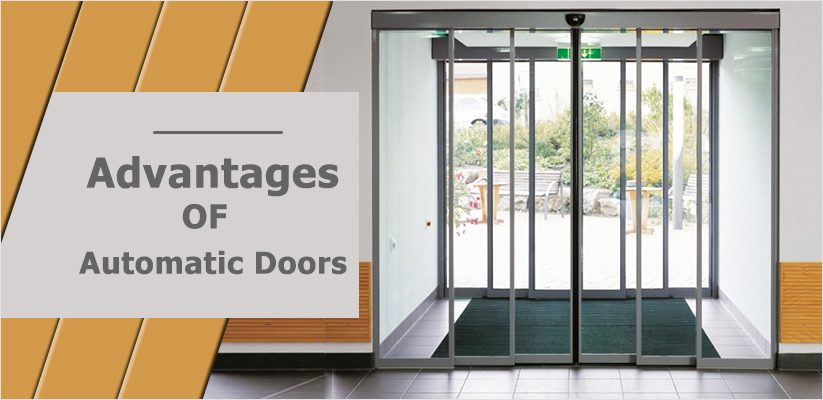Automatic doors have become a common sight in various establishments, from shopping malls and hospitals to office buildings and airports. These technologically advanced entrances offer numerous advantages, including convenience, accessibility, and energy efficiency. However, like any technology, automatic gates also come with disadvantages, such as maintenance requirements and safety concerns. In this blog, we will explore the advantages and disadvantages of automatic entryways, providing a balanced perspective on their impact and the considerations to keep in mind when incorporating them into architectural designs.
Post your Requirement
Advantages of Automatic Doors
Style options
Automatic entryways offer the advantage of diverse design options, allowing for enhanced aesthetics and customization. With a wide range of materials, finishes, and styles, architects and designers can seamlessly integrate these doors into various architectural styles. The design possibilities are endless, from sleek glass doors to classic wooden ones. These doors are available in three basic configurations, -swinging, sliding, and folding doors.
Additionally, they are available in sturdy and durable materials such as aluminum, steel, fiberglass, and timber that enhance any home or business’s unique style. These doors can be tailored to accommodate different sizes, shapes, and configurations, meeting the specific needs of each establishment.
Convenience and Efficiency
One of the primary advantages of automatic entryways is the convenience they provide. With their automated sensors, these doors open and close automatically, eliminating the need for manual operation. This feature is especially beneficial in high-traffic areas, such as shopping malls, airports, and hospitals, where numerous people enter and exit throughout the day. These doors ensure a smooth flow of foot traffic, preventing congestion and reducing waiting times.
Moreover, these doors are equipped with motion sensors that detect the presence of individuals approaching or leaving. This eliminates the hassle of having to physically push or pull a door, making it easier for people with disabilities, parents with strollers, or individuals carrying heavy objects to enter or exit effortlessly.
Enhanced Accessibility
Automatic gates improve accessibility for individuals with mobility challenges. The hands-free operation allows people who use wheelchairs or mobility aids to navigate through entrances without assistance. Furthermore, these doors are often designed with wider openings to accommodate wheelchairs, making buildings more inclusive and compliant with accessibility regulations.
Energy Efficiency and Sustainability
Automatic gates are energy efficient. They are equipped with sensors that detect movement, allowing the doors to remain closed when not in use, thereby minimizing energy loss. This feature is particularly important in climate-controlled environments, such as shopping centers and office buildings, where maintaining a consistent temperature is crucial.
By reducing air leakage, automatic entryways contribute to lower energy consumption and increased cost savings. This eco-friendly approach aligns with sustainable building practices, helping to reduce the carbon footprint of commercial and public spaces.
Safety and Security
Automatic gates prioritize safety and security. These doors are equipped with sensors that detect obstructions or unexpected objects in their path, preventing accidents or injuries. They also feature safety mechanisms that ensure the doors reopen when an obstruction is detected, keeping users safe from entrapment.
Furthermore, these doors can be integrated with access control systems, allowing authorized personnel to enter restricted areas while maintaining a secure environment. This is particularly beneficial in healthcare facilities, office buildings, and educational institutions, where controlled access is crucial for the safety and privacy of occupants.
Suggested: Advantages and Disadvantages of uPVC Doors and Windows
Disadvantages of Automatic Doors
Maintenance and Reliability
One significant disadvantage of automatic doorways is the need for regular maintenance. The complex mechanisms involved in their operation require regular servicing and occasional repairs. Malfunctions can disrupt the smooth flow of foot traffic, causing inconvenience. These repairs can be costly, especially if specialized technicians are required.
Furthermore, power outages or electrical failures can render automatic doors inoperable. In such situations, manual operation or alternative entrances must be readily available, ensuring uninterrupted access for individuals.
Safety Concerns
While automatic doorways are designed with safety features, there are still potential risks associated with their use. The motion sensors that detect the presence of individuals may not always function optimally, leading to unexpected door closures or failure to detect obstacles. This poses a risk of accidents, particularly for children, the elderly, or individuals with mobility challenges.
Sometimes these doors may close too quickly, potentially causing injuries or trapping objects or body parts. The force exerted by the doors can be hazardous if proper safety measures are not implemented.
Security Vulnerabilities
Like any technological system, automatic entryways can be susceptible to security vulnerabilities. Hackers with malicious intent can exploit weaknesses in the doors software or control systems, potentially gaining unauthorized access to secured areas. This highlights the importance of robust cybersecurity measures to protect against such risks.
Moreover, these doors can pose security concerns during emergencies. In the event of a power failure or emergency evacuation, manual operation may be required, and individuals may become disoriented or panic if they are unfamiliar with the doors manual override mechanisms.
Environmental Impact
Automatic doorways require a constant power supply, leading to energy consumption. This can be a concern in terms of sustainability and environmental impact. The continuous use of electricity may not align with efforts to reduce carbon footprints and promote energy-efficient practices.
Pricing
Automatic gates are costly as compared to their manual counterparts. Due to the presence of many automatic features, these doors can be expensive to procure and mandates a high budget. Moreover, in the case of repairs, they are comparatively expensive as compared to traditional doors.
Conclusion
Automatic doors have transformed how we enter and exit buildings, providing numerous benefits of convenience, accessibility, and energy efficiency. The automated operation, hands-free access, and improved traffic flow have enhanced the user experience in various settings. However, addressing the potential drawbacks associated with these doors, such as maintenance needs, safety concerns, and environmental impact is crucial. By carefully considering these factors and implementing proper maintenance protocols, safety measures, and energy-efficient practices, we can maximize the advantages of automatic gates while minimizing their disadvantages. Striking a balance between the benefits and challenges of this technology will allow us to create efficient, inclusive, and safe spaces.
Suggested: Top 10 UPVC Window Designs and Styles



















Post A Comment